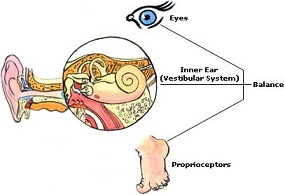
Ear and balancing is the ability to keep your body in a stable position, and to detect and respond to changes in the orientation of your body. It involves the coordination of your eyes, inner ear, and the muscles and joints of your body. Good ear and balancing skills make it easier to stay upright, maintain balance while walking, and avoid falls.
The internal ear contains two parts that help the body maintain its balance. The first is the vestibular system, which is composed of three semicircular canals and two otolith organs. The semicircular canals detect angular acceleration and deceleration of the head in three planes: up/down, left/right, and front/back. The otolith organs detect linear acceleration and deceleration of the head in the vertical plane. The second part is the cochlea, which detects sound vibrations and helps the brain interpret auditory information. Together, the vestibular system and the cochlea help the body maintain its balance and equilibrium.
Body balance is the ability of an individual to maintain their centre of mass within the base of support. This requires the generation of impulses in order to shift the body’s centre of mass, or to control the body’s movement. These impulses can be generated by muscles, the nervous system, or through external forces such as gravity or external objects. For example, when standing still, the body must generate impulses to maintain balance, while when walking the body must generate impulses to move the body’s centre of mass forward.

